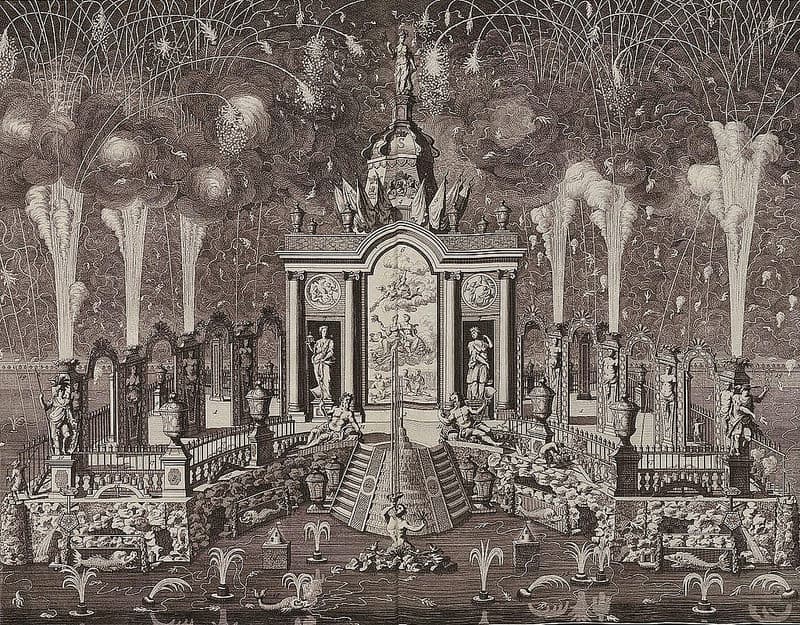Fireworks displays have surged in popularity over the past decade, captivating audiences with their dazzling colors and thunderous sounds. But what’s the magic behind these pyrotechnic marvels?
More Than Colorful Flames:
While the brilliance of different burning compounds is part of the allure, large-scale displays take it a step further. Think of it as a fireworks symphony, meticulously timed to music. This choreography hinges on a delicate balance between thermodynamics (energy release) and kinetics (reaction speed), orchestrated by skilled pyrotechnicians.
Gunpowder: The Classic Ingredient:
Gunpowder remains a staple in fireworks, with charcoal as its fuel source, burning slowly but steadily. To ramp up the burn, potassium nitrate is added as a solid oxygen source, speeding up combustion. Surprisingly, the exact chemistry of gunpowder remains somewhat elusive!
Computer Control: The Brainpower Behind the Display:
Complex fireworks displays are technical marvels, with thousands of cues orchestrating a flawless show. These cues trigger multiple devices in sequence, requiring precise timing and a deep understanding of pyrotechnic chemistry.
Ignition: Lighting the Fuse:
A simple fuse won’t suffice; instead, a bead of highly reactive material ignites the firework. This stable material reacts to the heat from an electric current, setting off the display like a match, but with electricity.

Delivery System: Guiding the Flame:
The fire must travel swiftly and precisely to the desired part of the firework without igniting prematurely. Enter the slow match, a string coated in fine gunpowder. To speed things up, it’s encased in a waterproof tube, aptly named quick match, allowing the flame to race forward at lightning speed.
Delayed Bursts: Adding Drama:
For delayed bursts, a common mechanism is the Bickford fuse. This thin gunpowder core wrapped in cotton forces the flame to burn through each grain meticulously, delaying the explosion.
Grand Finale: The Climactic Show:
During the grand finale, a computer triggers an electric match, igniting the quick match, lifting the firework into the sky. As it ascends, the Bickford fuse burns its way through, reaching the core where a bursting charge awaits. The resulting explosion unleashes colorful bursts of compressed gunpowder, creating the awe-inspiring spectacle we all cherish.
Fireworks have a rich history dating back centuries, evolving from simple explosives to sophisticated displays that light up the night sky. The art of pyrotechnics has seen remarkable advancements, blending science, artistry, and engineering to create breathtaking spectacles that leave audiences in awe.
The journey of a firework begins long before it lights up the sky. It starts with meticulous planning and preparation by skilled pyrotechnicians who understand the complex interplay of chemicals, physics, and timing required to orchestrate a flawless display.
At the heart of every firework is gunpowder, the classic ingredient that fuels the explosive reaction. Gunpowder, also known as black powder, is composed of three key ingredients: charcoal, sulfur, and potassium nitrate. Charcoal provides the fuel, sulfur acts as a catalyst, and potassium nitrate serves as the oxidizer, supplying the oxygen needed for combustion.
The exact composition of gunpowder can vary, with subtle variations in ingredient ratios and particle sizes affecting the burn rate and color of the resulting explosion. Skilled pyrotechnicians carefully tailor the composition of gunpowder to achieve the desired effects, whether it’s a dazzling burst of color or a thunderous boom.
Computer control plays a crucial role in modern fireworks displays, allowing pyrotechnicians to choreograph intricate sequences with precision timing. Sophisticated firing systems can cue hundreds or even thousands of individual fireworks, coordinating their ignition to create stunning visual and auditory effects.
But it’s not just about the big bangs and bright lights—delivery systems play a vital role in guiding the flames to their intended destination. Slow matches, quick matches, and delay fuses ensure that each firework ignites at the right moment and in the right sequence, adding depth and drama to the display.

And let’s not forget the grand finale, the crowning moment of any fireworks show. With a symphony of explosions lighting up the sky, the grand finale is a testament to the skill and artistry of the pyrotechnicians behind the scenes. It’s a breathtaking crescendo that leaves audiences spellbound and eager for more.
In conclusion, the magic of fireworks lies in the perfect harmony of science and art, where chemistry, physics, and creativity come together to create moments of wonder and awe. Whether it’s a small backyard display or a large-scale extravaganza, fireworks continue to captivate and inspire audiences around the world, reminding us of the beauty and power of human ingenuity.